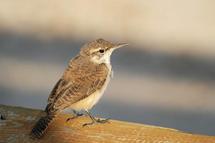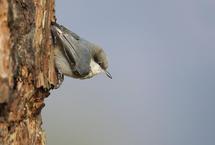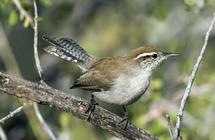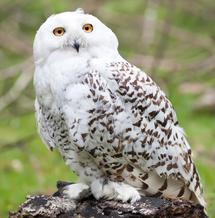saveourplanetearth.com
Call us: (775) 831-1331
The GBBC Follow-Up
Almost every day at lunchtime I go outside to sit on my deck in the sun, listen to the birds and read the newspaper. Today, as soon as I sat down, a bird began to sing. I wasn’t able to spot him but identified him through his unique song. Today I heard the Canyon Wren, whose unmistakable song is a descending cascade of clear, liquid notes.
Be sure to visit the Bonanza website or save-our-planet-earth.blogspot.com to find links to this truly beautiful bird song.
He’s a small bird – 5 ½ to 6” long, rusty-colored with a white throat and breast, a striped tail and long, slightly curved beak.
This bird is generally found on rocky hillsides and steep-walled canyons. It feeds on insects and spiders, using its long beak to probe into crevices. There are plenty of spiders to feed on in my yard and he won’t have to look very hard!
This may have been the same bird that I saw a couple of weeks ago that I identified as a Bewick’s wren. Today he sang his signature song, leaving no doubt as to what type of bird he is. It’s getting closer to spring and the birds are starting to sing their mating songs. I’ll be keeping an eye out for him, as he seems to be hanging around.
Last column I talked about the Great Backyard Bird Count (GBBC). Hopefully many of you got a chance to get out into nature and count some birds. I’d be interested in hearing from anyone who participated – what birds you were able to find and where. Contact me at toree.saveourplanetearth@gmail.com to share your experience.
I go out walking without fail twice a day, early morning and again at dusk and am always on the lookout for birds, plants and other wildlife. During the weekend of the GBBC, I carried a small notebook to record my observations and promptly lost my pen!
One bird I noticed in abundance was the Pygmy Nuthatch, the smallest bird I see, measuring only 4”. This tiny bird gathers noisily in flocks, creeping in jerking motions along limbs and trunks, looking for insects to eat. They roost communally, keeping each other warm during cold nights.
His body and wings are slate grey; he has a brown head, ending in a well-defined line at the eye, with white underparts.
I have only seen these birds out on the trail; they don’t visit my bird feeders like the white-breasted and red-breasted nuthatches do. Every morning as I pass by, they chatter and flit from tree to tree, scolding me for entering their space.
I also recorded Steller’s jays, dark-eyed juncos, and one spotted towhee. Data is still being recorded on ebird.org and birdcount.org but again, the count broke records for participation. So far 131 countries around the world have joined the effort, compared to 110 countries last year.
The most checklists are coming from the United States with California having the highest number of participants.
The most numerous species reported is the red-winged blackbird, at over 1.5 million individuals. Three of the species recorded on the most checklists are the Northern cardinal, the dark-eyed junco and the mourning dove.
One interesting thing is the documentation of the irruption (rapid or irregular increase) of the snowy owl, which apparently is moving in large numbers from its normal Arctic habitat, into Canada and the Great Lakes area of the United States.
This two-foot long owl with a five-foot wing span is almost entirely white, with yellow eyes and a black beak. He eats three to five lemmings a day, supplementing this diet with other rodents, rabbits, birds and fish.
Perhaps this irruption has something to do with the extreme arctic cold that has occurred this year in the North and in the East – even the Great Lakes are close to 90% frozen. Waterfowl from those areas are being spotted inland by participants of the GBBC.
This is the first time I have participated in the GBBC but it won’t be the last. For those of you interested in pursuing other citizen-science projects, remember our local resource, Tahoe Institute for Natural Science. Visit the website tinsweb.org for more information on area projects.
Canyon Wren
Thinkstock.com photo #147309597
Photographer Warren Price
Bewick's Wren
Thinkstock.com photo #187993599
Photographer drferry
Pygmy Nuthatch
Thinkstock.com photo #177266725
Photographer Jon Timmer
Snowy Owl
123rf.com photo #11717916






